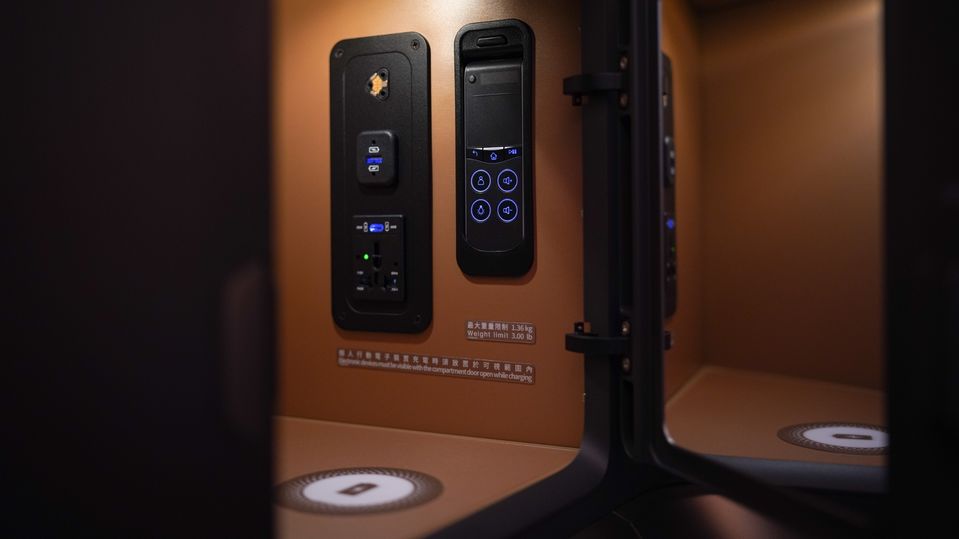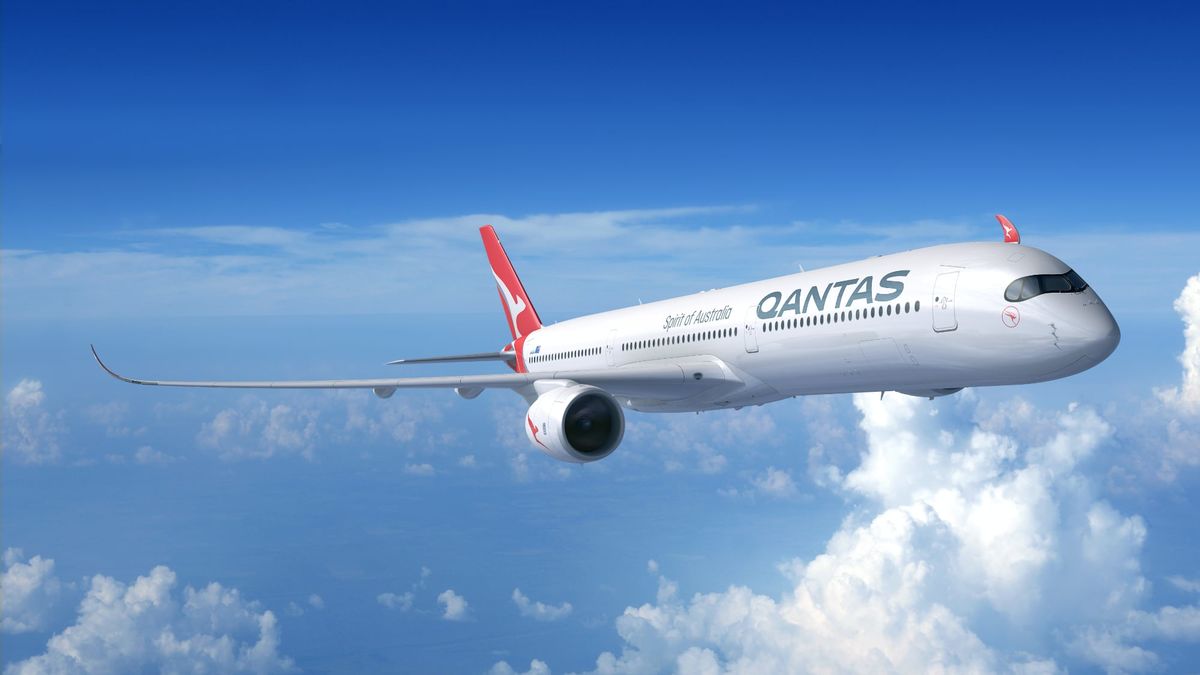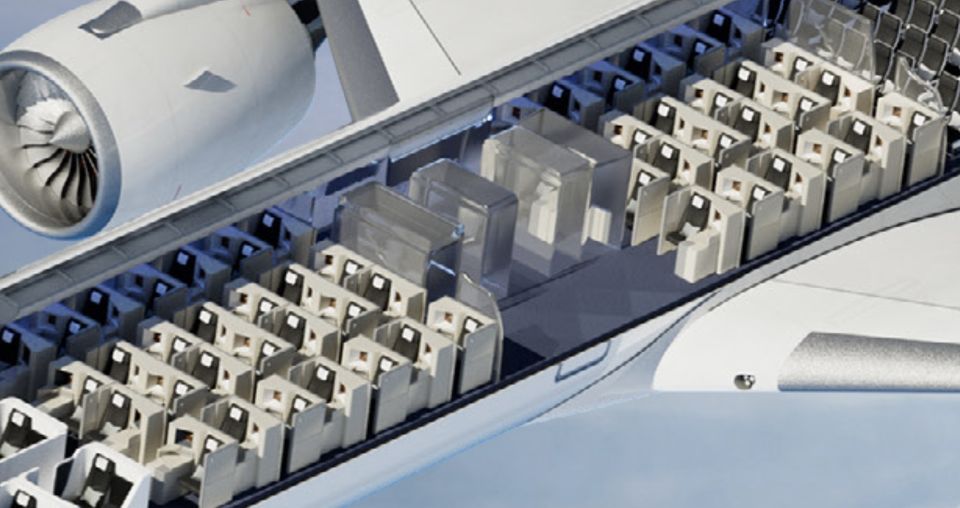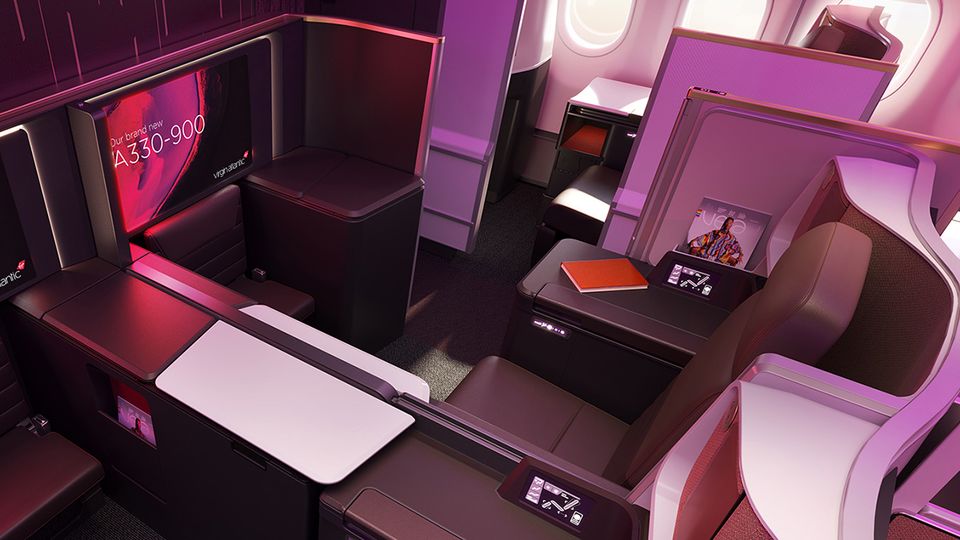|
Getting your Trinity Audio player ready...
|
Qantas will reveal its A350 business class seats tomorrow when the airline reports on its half-year financials from July-December 2022 (analysts are tipping a pre-tax profit upwards of $1.3 billion).
While we already know what the Qantas A350 first class suites will look like – and those spacious private suites are very much a ‘halo’ product – it’s those 52 business class seats which will carry most premium passengers on 18-20 hour non-stop ‘Project Sunrise’ flights from Sydney and Melbourne to the likes of New York, London and Paris from the end of 2025.
And the A350s won’t just be for those ambitious record-breaking marathons.
Qantas has already confirmed the A350 will take over from the Boeing 787-9 on the Perth-London route in 2026, and it’s expected a second tranche of A350 orders will see these modern jets effectively replace the double-decker Airbus A380s when those superjumbos are retired around the end of this decade.
They’re also likely to inherit other flagship routes from the Boeing 787: while the A350s have almost an identical number of seats, far more of these are given over to the higher-yielding premium cabins (first, business and premium economy) than on the Dreamliner.
In short, the Airbus A350 represents the next generation of Qantas’ international business class.
So what should we be looking for at this week’s reveal?
Great use of space
It goes without saying that business class is largely about having and enjoying your own space.
And one unique attribute of the Airbus A350 its its cabin width – the latest series pushes this out to 5.71 metres, compared to 5.49m on the Qantas Boeing 787.
Add the A350’s straighter wall panels and the end effect is that the A350 cabin is more like a room than a tube.
So the big question: has Qantas made full use of that footprint to deliver a wide, spacious seat almost tailor-made for the A350?
Sliding doors
Privacy remains another key factor in the business class equation, and that’s increasingly being delivered through full-height sliding doors (although some airlines have literally gone halfway with a panel that extends only part of the way).
Early A350 cut-away diagrams and seating charts shared by Qantas indicated that the business class seats located directly at the aisle had a sliding door or some other form of ‘screen’ to provide greater privacy from traffic in the aisle and the passenger directly across from them.
However, those same diagrams showed no such doors for the business class seats positioned away from the aisle: either in the middle section, or right next to the window.
Does this mean that only the aisle-adjacent seats will have those suite-style doors? If so, it’s a decidedly unique take on the trend towards doored suites, and would be a ‘first’ in business class design.
Business Plus
The first row of business class typically enjoys more legroom and overall space as it faces the bulkhead wall, rather than the back of another seat.
A number of airlines have optimised the layout of their business class cabin to give even more room to the first row of business class, while also upgrading those seats with features such as an ottoman (which doubles as a spare seat for guests), a personal wardrobe, mini-bar and larger-again video screen.
Of course, these ‘business plus’ seats come with a higher price tag.
Recent examples include Virgin Atlantic’s The Retreat and Air New Zealand’s Business Premier Luxe.
And while it’s notable that neither Virgin Atlantic out Air New Zealand have first class, Lufthansa’s forthcoming A350s will combine first class with a ‘business plus’ row and conventional business class seating.
So we can’t rule out that Qantas too might add a ‘business plus’ row at the very front of the business class cabin.
Mod cons
Here are some common elements across the latest business class seats which we’re hoping Qantas will deliver:
USB-C outlets: with more and more mobile devices relying on USB-C charging points rather than USB-A, airlines are including both version of the USB port
Wireless charging: why bother with a cable? Simply place your device on a suitably-marked part of the bench (ideally with a raised and textured plastic surface to stop your phone from slipping around) and let it soak up the juice as you oar above the clouds
Bluetooth audio: leave the airline-supplied headphones in their little plastic bag and hook up your own high-quality noice-cancelling headphones or earbuds via Bluetooth to the large HD video screen.

This cabinet in the Starlux A350 business class seat contains USB-A, USB-C and wireless charging (plus a handy little mirror).
Smart storage
The days of boarding a flight with just a book or magazine and maybe your reading glasses are long gone.
These days travellers are toting bags bulging with laptops, tablets and smartphones, assorted cables, noice-cancelling headphones, their own inflight amenity kit, spritzes and sprays… and they want somewhere to stow all this, while keeping it close at hand.
And with Project Sunrise marathons closing on 20 hours, there’s even more need to turn your A350 business class seat into a cosy ‘nesting space’ where you can really settle in and relax all the way through the flight.





